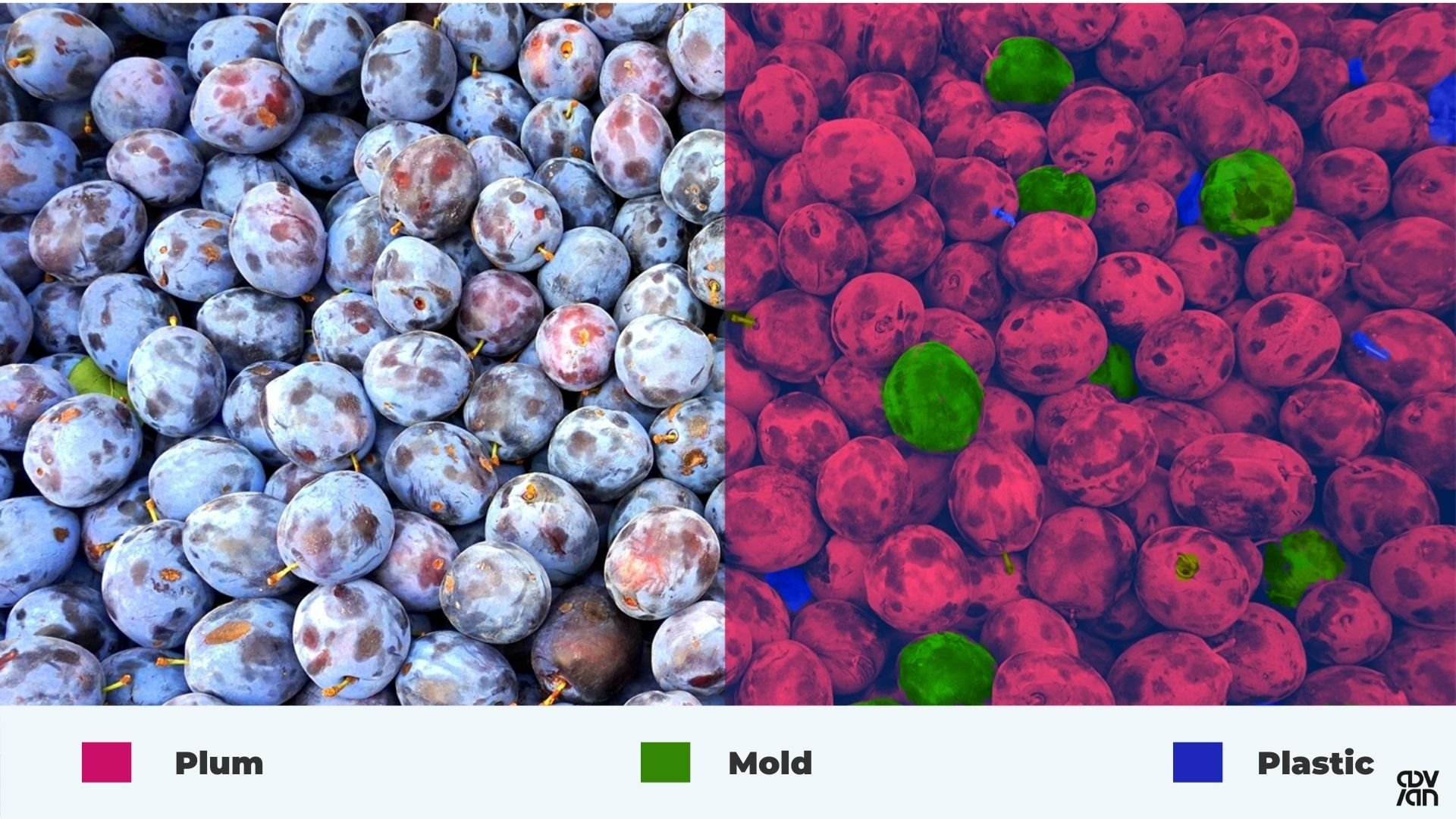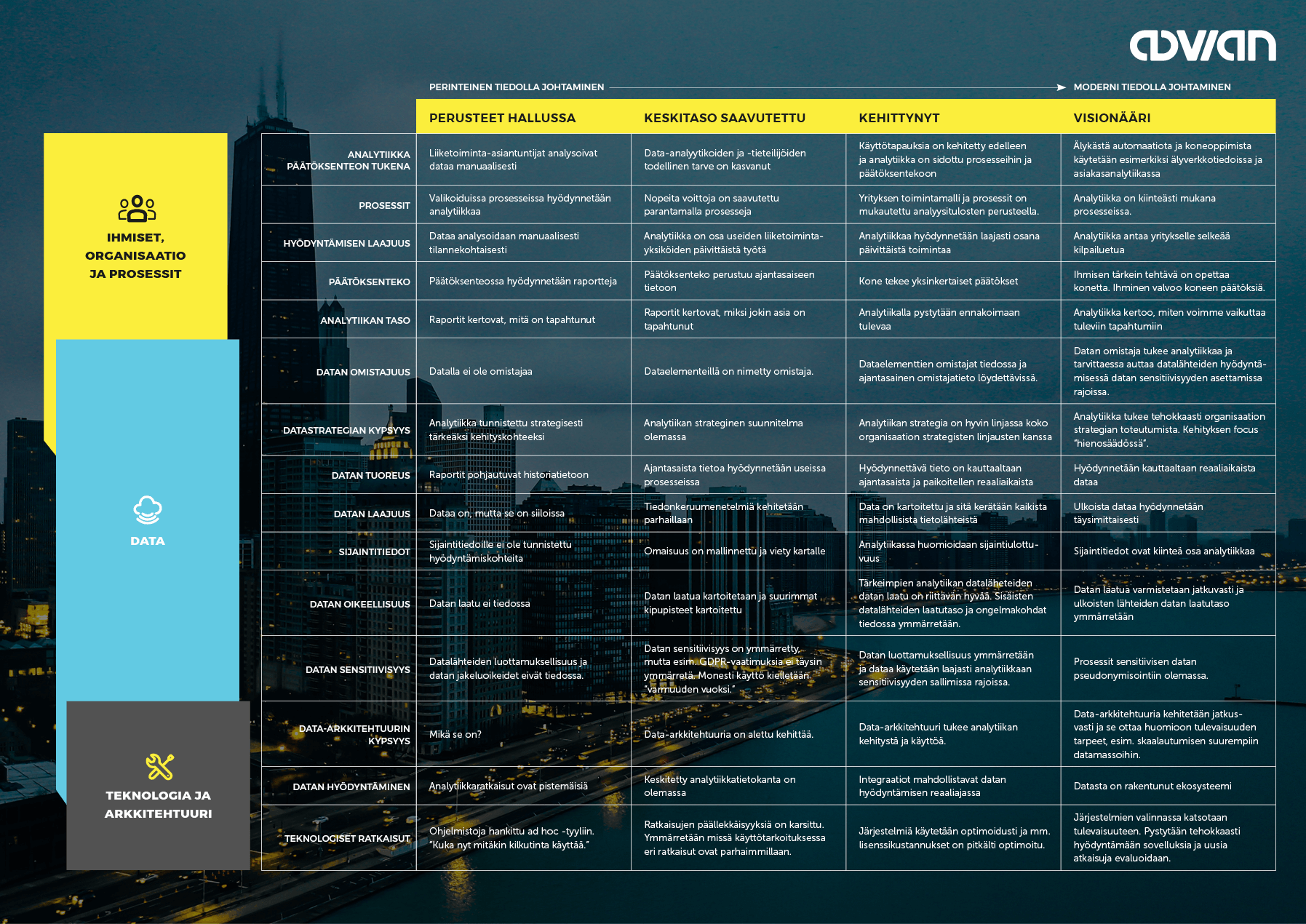What if there was a camera that could reveal your product's hidden information by identifying its invisible features, such as chemical composition? What if you could separate similarly-looking objects automatically from each other? Well, with hyperspectral imaging you can do just that.
In this blog, we explain what hyperspectral imaging is, the reasons behind its increasing popularity, and what type of advanced applications it has in the food industry.
The Camera that Sees the Invisible - What is Hyperspectral Imaging?
Optical sensors, such as your phone camera, emulate the human eye by capturing reflected light in the red, green, and blue (RGB) spectral channels. Sensors form a photograph of RGB pixels that humans can understand. Those three spectral regions represent the visible light spectrum. Humans use visible light to quickly detect objects' physical properties (size, color, shape) and their relation (proximity, distance) to their environment.
However, the spectral information of just RGB is rather limited. If we want to know an object’s chemical composition, what it is made of, and other chemical properties, simple RGB channels are simply not enough. What if we could investigate and reveal an object’s hidden information? What if we could identify invisible objects and features, and separate similarly-looking objects? For example, when thinking about a food production line, the human eye or a normal camera is not accurate nor fast enough to detect, if the food packages are airtightly sealed.
To do so we can use Hyperspectral imaging (HSI).
Hyperspectral imaging is a non-destructive technology in which a camera collects an image of a target. The sensor records reflected light from the visible and near-infrared regions in several tens or hundreds of narrow spectral channels. These spectral channels are also known as wavelengths.
How light interacts with an object is called the study of light, scientifically known as (imaging) spectroscopy. Each material reacts differently with light. When we measure this interaction, it results in a unique individual ‘fingerprint’ called spectral signatures. A spectral signature holds unique quantifiable information in each wavelength that we can use to identify objects and extract information.
Use Cases of Hyperspectral imaging for the Food Industry
HSI has been applied in a wide range of applications and industries: to detect rock minerals from airborne images, plant diseases in agricultural crops, eye anomalies in biomedical imaging, foreign materials in food processing, or in surveillance using thermal HSI for detecting hidden enemies.
HSI is not only reserved for large academic research projects and corporations. Sensor cost prices are rapidly decreasing. The performance-to-cost ratio meets the industry standards, allowing small to medium size companies to invest in automated quality inspection setups. In addition, sensors are becoming more versatile. New sensors are introduced for specific conditions; from lightweight sensors for drones, robust airplane compatible sensors, to sensors for industrial applications requiring real-time data collection.
Hyperspectral imaging is slowly becoming a viable alternative or additional solution to X-ray, RGB cameras, and 3D models for quality inspection. In this article, we will focus on three well-tested applications in the food industry.
Detect Foreign Objects
With Hyperspectral imaging, you can detect alien objects in food processing (such as metals, plastics, and glass).
To ensure food safety, any foreign material that enters the food processing production line needs to be detected. Traditional food quality inspection includes tedious food sample laboratory testing with results coming back the next day or later.
HSI enables real-time, precise, and reliable detection of foreign objects. The food processing industry is slowly adopting hyperspectral sensors. When HSI is combined with machine learning algorithms, HSI sensors enable digital sorters to automatically detect and remove foreign material. The rapid and precise detection of HSI sensors detecting foreign objects in bulk food streams saves time and money when compared to traditional laboratory testing.
Objects such as plastics, glass, wood, rubber, metal, stones, or other objects are common examples found in food production lines. Not all foreign material can be easily detected with the human eye.
Food Quality Inspection
Inspect food quality at a highly detailed level.
The most common detection methods used for food inspection are metal detectors and x-rays. Metal detectors and x-rays are very good at detecting metal objects, but they lack the ability to detect food biological properties such as fat-, and water content, and meat tenderness.
Hyperspectral imaging can be used to inspect food quality at a highly detailed level. The reflectance spectra can be used to rapidly assess food quality, such as ripeness, or identify anomalies such as food molds. HSI can answer questions such as: how much mold is present on food samples, and where the food mold located.

A comparison between a normal camera on the left and a hyperspectral camera on the right. Moldy fruits and plastic can be easily detected and located.
Identify Holes in Packaging
Hyperspectral imaging can also be used to detect holes in food packaging.
Food packages are heat-sealed but holes can occur during this process. Food packages need to be airtight to minimize the risk of food contamination. When air enters food packaging through holes, bacteria will rapidly deteriorate food quality and grow molds and fungi. Incorrectly heat-sealed food packages will deteriorate food quickly and can’t be sold, resulting in revenue loss for the manufacturer.
Other HSI use cases are detection of discoloration, identification of insects, stones, shell pieces, wood objects between candy, predicting seed and grain protein content, measuring ripeness in fruits, and reducing product waste.
Food manufacturers have implemented hyperspectral sensors to ensure and improve product consistency, and to increase yields by reducing food waste in a systematic, reliable, and data-driven method.
What are the Benefits of Hyperspectral Imaging?
HSI has many benefits over conventional RGB camera setups and is rapidly gaining interest from the private sector. RGB sensors belong to the group of multispectral sensors. Multispectral sensors do not have continuous spectral channels but only use a subset of selected wavelengths.
For most applications, multispectral channels are not sensitive enough to accurately identify specific object features. Simply put, the spectral resolution of RGB cameras is too low to detect spectral features or the spectral features are only visible to near-infrared sensors. The narrow bands of HSI sensors can detect water content, potential diseases, or chlorophyll content in leaves which are invisible to RGB sensors.
Using hyperspectral imaging has many advantages, but what are the main reasons behind its increasing popularity?
1. Cost-effective
Hyperspectral imaging is not only reserved for large academic research projects and corporations. Sensor cost prices are rapidly decreasing. The performance-to-cost ratio meets the industry standards, allowing small to medium size companies to invest in automated quality inspection setups. The need for manual inspections and laboratory testing decreases, which results in outstanding cost savings.
2. Improved quality
Hyperspectral imaging is a great asset to quality assurance since the system can be automated to inspect object surfaces to identify possible anomalies or deviations. It works on different surface properties from painted materials, to wood and metal. Another use case of hyperspectral imaging for quality assurance is to make sure that all objects are correctly placed, positioned, and packaged during the process. When combined with AI, the system can autonomously react to deviations.
3. Nondestructive & contactless
Many traditional methods use destructive methods to find the target’s chemical properties. HSI is an optical sensor and requires no physical contact with the target. The target does not need to be probed with cables or sensors nor physically be prepared or altered - no waste is generated. Using hyperspectral imaging is completely harmless. The sensor is a passive sensor and captures the target’s reflected light from a light source such as a lamp, or the sun.
4. No product knowledge required
One of the major benefits of HSI is that the sensor operator does not require any subject matter experience to record the target’s reflectance. An entire spectrum can easily be acquired at each point. All spectral and spatial information can be mined during the postprocessing phase.
5. Versatile
Spectral sensors are very versatile. The same sensor can be applied for multiple applications, from identifying plastics in food, to detecting moisture content in crops. Spectral sensors do not require the target to be in close range. Sensors can be mounted on moving vehicles such as drones, and airplanes to cover large areas quickly. HSI is used frequently in forestry and agriculture to monitor and assess forest and crop health for diseases.
6. Precise & Rapid
Hyperspectral sensors are very reliable and capture imagery at very high speeds. Depending on the type of sensor these sensors can capture up to 6510 frames per second. This is more than enough for any industrial application that requires imaging of fast-moving objects. HSI sensors are ideal for industrial applications that require real-time inspection for in-line conveyor belts with fast-moving objects.
Would you like to hear more about the possibilities of Hyperspectral imaging?
You might already have some ideas, how to improve your quality assurance processes with hyperspectral imaging. Let's discuss them together! Below, you can book a free consultation with our expert. 👇

Learn more about our Smart Factory solutions
Smart Factory enables intelligent automation of your factory.

Topics: Ai, Advanced Analytics, Machine Learning, Manufacturing, Hyperspectral imaging













